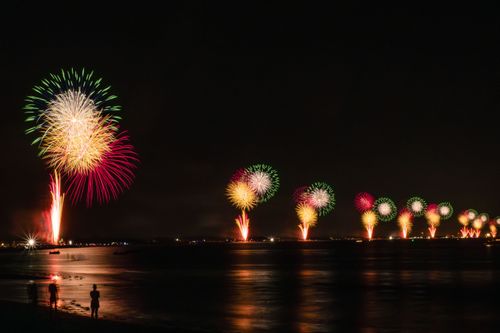12-05-2025
La Fenice: The Heartbeat of Venice – in Music and in History
In the heart of Venice, just steps from St. Mark’s Square, stands a theatre that is more than just an opera house: La Fenice is a symbol of rebirth, resilience, and artistic splendor. Since its foundation at the end of the 18th century, it has mirrored the soul of the city: graceful, proud – and unbreakable.
The story begins in the 1770s, when the prestigious Nobile Società dei Palchettisti lost its beloved Teatro San Benedetto. The Venetian elite longed for a new stage that would reflect the cultural stature of their city. The architectural competition for the new theatre was ambitious: the building had to offer perfect acoustics, five tiers of private boxes, safe and elegant design, and access for gondolas via canal. The winning project came from Giannantonio Selva, who drew inspiration from classical mythology – and in 1792, La Fenice ("The Phoenix") rose from the dreams of a city that lives for beauty. The theatre opened with I giuochi d’Agrigento by Giovanni Paisiello.
During the Napoleonic era, the theatre was nationalized and restored in Empire style. The 19th century brought further changes: major renovations in 1825, reconstruction after a devastating fire in 1836, and modifications in 1854, 1865, and again in 1937. In the revolutionary year of 1848, the imperial box was removed in a gesture of resistance – only to be reinstated during the Austrian restoration.


Rising from the Ashes
La Fenice’s name, chosen long before fate made it prophetic, turned out to be all too fitting. Two major fires marked its history. The first, in 1836, was caused by a faulty heating system. Firefighters managed to save the entrance hall, the ballroom, and the exquisite Apollonian Rooms – but the auditorium and stage were destroyed.
The second blaze, on 29 January 1996, was deliberate. In a desperate attempt to avoid late penalties, two electricians set fire to the building. Once again, thanks to the courage of the fire brigade, surrounding homes were spared. But La Fenice was left in ruins.
Reconstruction followed the now-iconic Venetian principle: “com’era, dov’era” – “as it was, where it was.” Architect Aldo Rossi led the project, and after seven years of careful restoration, the theatre reopened in December 2003, with a full week of inaugural events.


A Timeless Experience
oday, La Fenice is once again one of the most important cultural institutions in the world. It hosts a prestigious calendar of operas, ballets, symphonic concerts, and the globally broadcast New Year’s Concert.
Its neoclassical architecture is refined yet dramatic. The elegant façade, with its Corinthian portico, invites visitors into an interior of gold stuccoes and luminous frescoes. The Sala Apollinea and the grand main theatre radiate a unique atmosphere, under the watchful gaze of the Lion of Saint Mark, positioned above the royal box.
Adding to the experience is a permanent exhibition dedicated to Maria Callas, the legendary soprano who lived and sang in Venice. Through her story, visitors are transported into the very essence of operatic greatness.


The Name says it all
The name La Fenice perfectly captures the spirit of the theatre: a mythical bird reborn from its own ashes. It stands as living proof that culture, no matter how battered, never truly dies. It transforms. It returns – stronger, more luminous than ever.
To visit La Fenice is to step into a space where music and memory intertwine, where art becomes tangible beauty. Just take a walk down Calle Larga XXII Marzo – the favorite route of luxury shoppers – and let the music guide you to one of Venice’s most enduring treasures.








